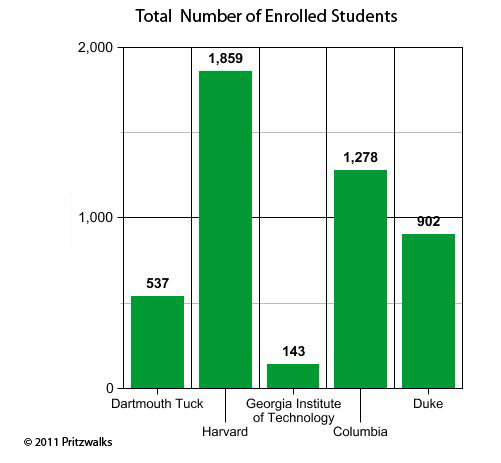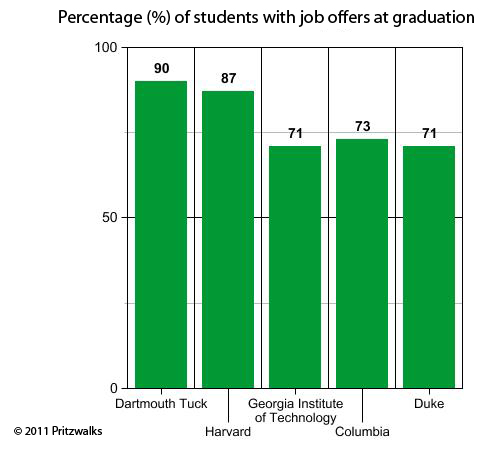 Is bigger necessarily better? BusinessWeek asked Doug Guthrie, the dean of George Washington University’s School of Business, if the size of a school’s program mattered. He responded by saying that it generally depends, and that larger programs can spread their message more effectively – but that in the end, a smaller class size is ultimately better because faculty can have closer and more intimate interaction with students.
Is bigger necessarily better? BusinessWeek asked Doug Guthrie, the dean of George Washington University’s School of Business, if the size of a school’s program mattered. He responded by saying that it generally depends, and that larger programs can spread their message more effectively – but that in the end, a smaller class size is ultimately better because faculty can have closer and more intimate interaction with students.
Intuitively, this makes sense. A small number of people means more direct interaction, and more cohesion. But does a smaller class size make a difference in the long run – and is this effect quantifiable?
Let’s look more closely at some top tier US full time MBA programs and their number of enrolled students (data is from the most recent BusinessWeek MBA rankings):
These numbers vary quite substantially, and overall represent a good cross-section for enrollment levels of full time MBA programs in the US. So, how does enrollment class size play out in terms of student success? This chart shows the same schools, with the percentage of students who got job offers at graduation (a pretty good sign of a program’s success):
Admittedly, there are many other variables that influence a program’s success beyond class size, and in the end, it’s hard to quantify success anyway. But with that in mind, we don’t see any clear trend – at the time of graduation, Georgia Tech’s program places about the same percentage of students as Duke’s – with a fraction of its class size. Basically, there is no clear correlation between the number of students enrolled and how well those students end up doing, at least based on these data.
But do students get lost in a large class? Does a more intimate setting encourage cohesion? In fact, many programs that have large cohort sizes find unique ways to integrate students into cohesive communities. For instance, Columbia manages its relatively large class size by paring it down into what it calls “clusters.” According to the school’s website:
Community building begins right at the start of the MBA program, as admitted students are assigned to clusters of 65 to 70 fellow students who take most of the first-year core classes together. As diverse as the class itself, each cluster is made up of people from all over the world, with a wealth of different skills, ideas, leadership styles, and backgrounds. By sharing so much of the academic experience together, clusters become especially close, and this closeness invites a richer learning environment, one where students are more comfortable challenging ideas — and each other — while working together to become transformative business leaders.
So, when deciding among MBA programs, maybe a school’s size is not a crucial factor. While you’re deciding, try to keep in mind some of the relative benefits of large and small schools. Here’s a few to think about:
Benefits of Large MBA Programs
- – Robust alumni network
- – More diversity
- – More networking opportunities
Benefits of Small MBA Programs
- – More intimate feel
- – Deeper connections with other students
- – Better access to faculty


The Otago MBA at the University of Otago School of Business in New Zealand has a small class size of less than 40. In addition to the above mentioned benefits of a small class, we are able to give every student a 1-to-1 business mentor, provide better networking opportunities, not so much with fellow students, but with business people, our executive speakers and alumni because they are more likely to have high quality interactions with them. Otago MBA has a small class size but this isn’t at the expense of a diverse, international mix. A large class might still be dominated by students from one area. The Otago MBA has a Six Continent Admission Strategy which ensures a diverse mix. (Twitter: @otagomba)